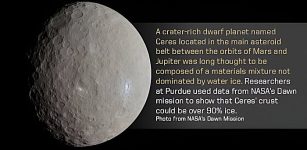Lenticular Galaxy NGC 612 Captured By Hubble Is An Odd Source Of Radio Waves
Eddie Gonzales Jr. – MessageToEagle.com – A striking orange and blue streak fills this new image from NASA’s Hubble Space Telescope. Hubble’s visible and infrared capabilities captured this edge-on view of lenticular galaxy NGC 612.
NASA’s Hubble Space Telescope, ESA, A. Barth (University of California – Irvine), and B. Boizelle (Brigham Young University) ; Processing: Gladys Kober (NASA/Catholic University of America)
Lenticular galaxies have a central bulge and disk, much like spiral galaxies, but they lack the characteristic arms. They typically have older star populations and little ongoing star formation. In NGC 612, dust and cool hydrogen gas make up the majority of the galactic disk, the plane of matter we see in orange and dark red. This galaxy appears in the Sculptor constellation and is easily visible from Earth’s southern hemisphere.
NGC 612 is an active galaxy, which means that its center appears more than 100 times brighter than the combined light of its stars. It is also a Seyfert galaxy, the most common type of active galaxy. Seyfert galaxies emit large amounts of infrared radiation despite looking normal in visible light.
NGC 612 is a Type II Seyfert, which means matter near the center of the galaxy moves rather calmly around the nucleus. The stars in this galaxy are unusually young, with ages around 40 to 100 million years.
NGC 612 is also an extremely rare example of a non-elliptical radio galaxy, a type of galaxy that shows significant radio emissions—in this case, an association with radio source PKS 0131-36. Astronomers have only discovered five such radio-emitting lenticular galaxies in the universe.
One theory attributes NGC 612’s unusual radio emissions to a past interaction with a companion spiral galaxy. Another theory focuses on the galaxy’s bright and dominant bulge, which is similar to those seen in elliptical radio galaxies.
By imaging this galaxy, astronomers hope to uncover more about what causes galaxies to emit radio waves.
British astronomer John Herschel discovered NGC 612 in 1837. It is about 400 million light-years from Earth and has a mass of around 1.1 trillion times that of our sun.
Written by Eddie Gonzales Jr. – MessageToEagle.com Staff











